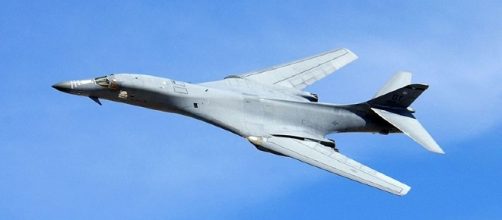In the wake of the successful test of a North Korean ICBM, the United States military is scrambling for ways to respond. The United States has decided on demonstrations of military force that are designed to convince the North Korean leadership that it would be on the losing side of any conflict it might try to start. The theory is that Kim Jong-un cares about self-preservation above all else. With that in mind, the United States has already conducted a practice bombing run with a pair of B-1 bombers near the Demilitarized Zone between the two Koreas.
It plans to follow up with a test of the THAAD ABM battery deployed near Kodiak, Alaska.
B-1 bombers demonstrate their power
The B-1 bomber, even without the nuclear weapons it was first designed to carry, is one of the most impressive weapons delivery platform on the planet. In the event of a conflict with North Korea, the B-1 would likely be in the first wave, striking at that country’s nuclear and missile arsenal as well as the artillery batteries that have the South Korean capital of Seoul in their sights.
Escorted by fighter jets, two B-1s dropped dummy ordinance on a test range within South Korea and then flew close to the DMZ. The message to the North Korean leadership was that the United States is prepared to use such weapons in the event of war and that there is no defense against them.
United States is planning a test of the THAAD ABM system
The second step in America’s high-tech saber-rattling campaign will be a test of the THAAD ABM system in Kodiak, Alaska, similar to the one deployed in South Korea. In the event of a North Korean missile strike on Alaska, the THAAD would be the last line of defense to ward off such an attack.
The idea behind the test is to, hopefully, convince the North Koreans that a nuclear strike against the United States would be futile. The exercise, considering the so-far spotty record of American missile defense tests, is one of high stakes poker. A nuclear missile might be stopped, or it might get through. Either result will be awful for all concerned, with the former less dangerous for the United States.
No good options
Trump, in the meantime, is making another effort to convince the Chinese to bring its client state to heel. So far, despite a few gestures, Beijing has been content to let things stew. Trump has to convince the Chinese that the risk that policy entails is as unacceptable to them as much as it is the United States.


